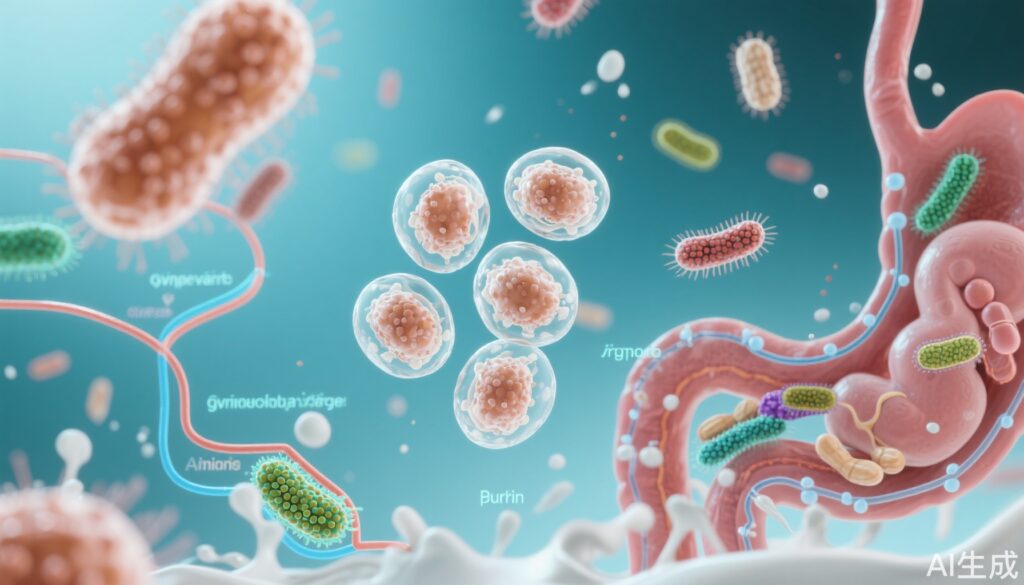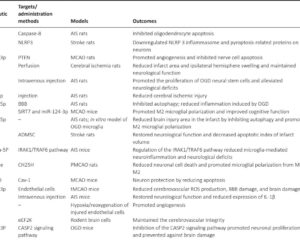Highlights
- Milk small extracellular vesicles (sEVs) mediate inter-kingdom communication, selecting approximately 55,000 genomic variants in gut bacteria influencing microbial differentiation.
- Genomic variation induced by milk sEVs leads to significant alterations in bacterial metabolism of sugars, amino acids, and purines, with metabolic changes up to 12-fold in cultured bacterial systems.
- Milk sEV-dependent modulation of gut bacterial metabolism correlates with neurodevelopmental outcomes in sEV-deficient neonates, including impaired spatial learning, memory, and increased epileptic seizures.
- Formula feeding lacks adequate milk sEVs compared to breast milk, underscoring potential nutritional and developmental risks mediated via gut microbiota metabolic shifts.
Background
The intestinal microbiota is recognized as a dynamic and integral part of host physiology, influencing metabolism, immunity, and neurodevelopment. Extracellular vesicles (EVs), particularly small extracellular vesicles (sEVs) derived from dietary sources like milk, have emerged as mediators of inter-kingdom communication between host and gut bacteria. Evidence suggests that milk sEVs carry bioactive molecules that can alter bacterial genetic variation and metabolic function, consequently impacting host health parameters.
Given the widespread use of infant formula, which contains minimal milk-derived sEVs, understanding the role of milk sEVs in shaping gut microbial communities and host metabolism is critical. The reported study by Zhou et al. (2025) presents comprehensive evidence on how milk sEVs select for genomic variants in gut bacteria implicated in essential metabolic pathways, fundamentally altering microbial community structure and metabolic output.
Key Content
Bioinformatic Analyses of Genomic Variant Selection by Milk sEVs
Zhou et al. utilized complementary bioinformatics workflows—MIDAS (Metagenomic Intra-species Diversity Analysis System) and StrainPhlAn—to analyze over 400 million sequencing reads from anaerobic cultures of mouse cecal bacteria grown with or without milk sEVs. MIDAS, using ~30,000 bacterial reference genomes, revealed selection of genomic variants including single nucleotide polymorphisms (SNPs), insertions, and deletions across 19 bacterial species. StrainPhlAn provided high-resolution mapping using annotated phylogenetically informative marker genes, confirming sEV-driven strain-level divergence.
The rigorous experimental design controlled for interindividual microbiota variation by splitting cecal inocula into sEV-containing and sEV-free media with biological triplicates. Detected variants were validated across multiple replicates with high and low stringency criteria. Overall, about 55,000 genomic variants were selected by milk sEVs, indicating a strong effect on gut bacterial genetic diversity.
Metabolic Consequences of Genomic Variation
Non-targeted metabolomic profiling of bacterial pellets and cell-free supernatants identified over 1,000 metabolites showing significant abundance changes (up to 12-fold) attributable to sEV presence. Approximately 536 metabolites in pellets and 494 in supernatants exhibited sEV-dependent modulation, involving major classes such as sugars, amino acids, and purines.
Purine metabolism, encompassing key metabolites like ATP, cAMP, GTP, NAD, and NADP, was prominently affected. These metabolites are crucial for brain energy metabolism and purinergic signaling pathways, providing a mechanistic link to observed neurodevelopmental phenotypes in sEV-deficient animals. The study confirms that sEV-induced genomic variation reshapes bacterial metabolic pathways, affecting metabolite profiles that interact with the host.
Biological Implications and Host Outcomes
Milk sEV-driven metabolic shifts in the gut microbiota have been associated with adverse phenotypes in neonatal and adult organisms deprived of dietary sEVs. Recent reports demonstrate spatial learning and memory impairments and exacerbated brain seizures in mice fed sEV-depleted diets, correlating with altered purine and sugar metabolic pathways.
Human relevance is underscored by the stark contrast in sEV content between breast milk (rich in sEVs) and infant formula (minimal sEVs). Given the dominance of formula feeding in many developed countries, these findings raise nutritional and developmental concerns potentially mediated by the gut microbiome’s metabolic capacity.
Mechanisms of Milk sEV Uptake by Gut Bacteria
Functional studies employing fluorescently labeled milk sEVs confirmed rapid uptake/internalization by both Gram-positive (Bacillus subtilis) and Gram-negative (Escherichia coli) bacteria within minutes. Further validation using reporter plasmids carrying fluorescent protein genes loaded into sEVs demonstrated expression in E. coli and Bifidobacterium species.
This supports the concept that milk sEVs can deliver genetic material and bioactive molecules directly into gut bacteria, facilitating genomic variant selection and metabolic remodeling. The exact molecular cargo and pathways mediating these effects, however, require further elucidation.
Expert Commentary
This pioneering study advances understanding of dietary sEVs as biological effectors of gut microbial genetic diversity and metabolic function. Beyond previous research focusing only on community composition shifts, the present work reveals strain-level genomic selection with profound metabolic consequences, a critical insight into host-microbe interaction biology.
Clinically, the implications for infant nutrition are significant. The relative lack of sEVs in formula feeding may adversely influence gut microbiota evolution and functions essential to neurodevelopment. This opens avenues for nutritional interventions, including fortification of formula with bioactive sEVs or designing sEV-mimetic therapeutics.
Limitations include the in vitro nature of bacterial culture models and the need for longitudinal in vivo studies to confirm causality and translational relevance. Differences between mouse and human microbiota, and interindividual variability in milk sEV composition, represent additional challenges.
Furthermore, this study hints at a broader biological principle: the role of dietary EVs—including those from plant sources—in shaping microbiota genomic and metabolic landscapes. This warrants exploration due to potential impacts on human health beyond infancy.
Conclusion
Milk-derived small extracellular vesicles exert selective pressure on gut bacterial genomes, fostering strain divergence that alters key metabolic pathways involving sugars, amino acids, and purines. These microbiome metabolic alterations carry significant implications for host neurodevelopment and health, particularly in the context of infant nutrition.
Future research should focus on delineating the molecular cargo mediating these bacterial effects, validating findings in human cohorts, and developing sEV-based nutritional or therapeutic strategies to support optimal microbiota development and host outcomes.
References
- Zhou F, Tajamul Mumtaz P, Dogan H, Madadjim R, Cui J, Zempleni J. Divergence of gut bacteria through the selection of genomic variants implicated in the metabolism of sugars, amino acids, and purines by small extracellular vesicles in milk. Gut Microbes. 2025 Dec;17(1):2449704. doi: 10.1080/19490976.2025.2449704. Epub 2025 Jan 6. PMID: 39762216.
- Additional relevant literature to expand clinical and mechanistic context can be explored based on advances in microbiome-host interactions and milk-derived vesicle research.


